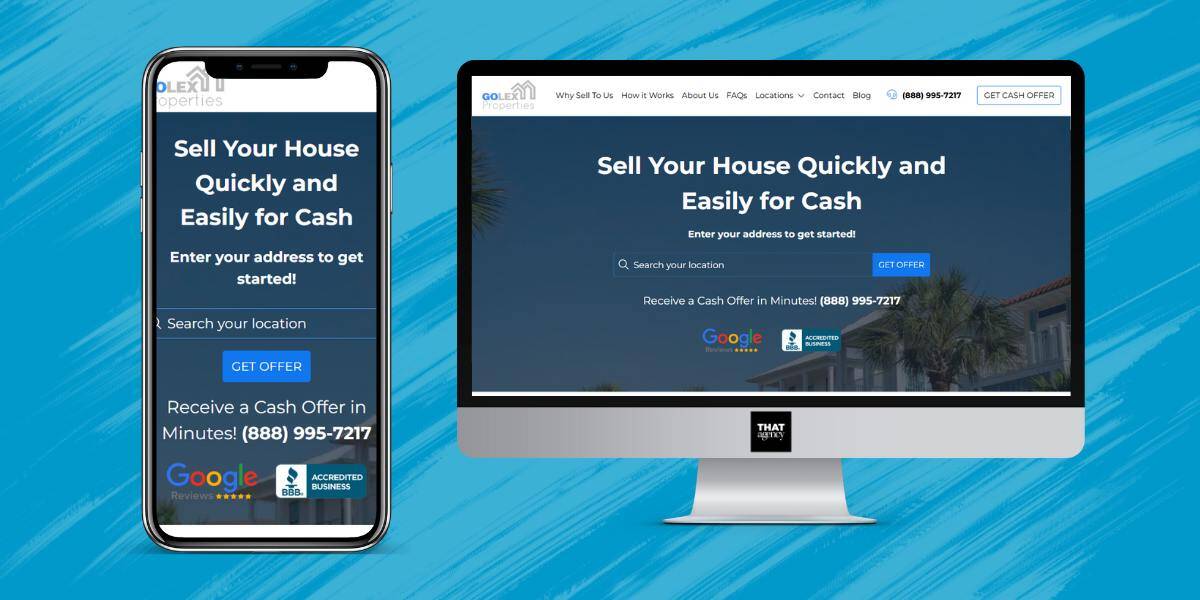Imagine consistently outbidding your competitors, capturing the perfect keywords, and maximizing your ad spend with precision. Sounds like a dream, right? This dream can become your reality through Competitive PPC analysis. This powerful strategy lets you peer into your competitors’ tactics and discover hidden opportunities to dominate the digital marketing arena. In this comprehensive guide, we'll break down competitive PPC analysis, discussing what it is, why it matters, and how you can master it. By the end of this article, you'll have the tools and knowledge to outsmart your competitors and elevate your marketing game.

What is Competitive PPC Analysis?
Competitive PPC analysis means looking at your competitors' PPC campaigns to understand their strategies, strengths, and weaknesses. By learning what your competitors are doing, you can find opportunities to improve your campaigns, spend your money more effectively, and get better results. This involves analyzing your competitors' keywords, ads, landing pages, and bidding strategies.
Why Should I Care About My Competitors' PPC Campaigns?
Knowing what your competitors are doing helps you identify gaps and opportunities in your strategy. If they're using certain keywords or ad copy effectively, you can learn from their success and apply similar tactics. It’s also crucial to know where you stand in comparison to them.
How Do I Start a Competitive PPC Analysis?
Start by identifying who your main competitors are. This could be businesses that offer similar products or services as you. Once you know who to look at, use tools like SEMrush, SpyFu, or Ahrefs to gather data on their PPC campaigns.
What Should I Look For in My Competitors' PPC Campaigns?
Focus on several key areas:
- Keywords: What keywords are they bidding on? Are there any high-performing keywords you’re missing?
- Ad Copy: What does their ad copy look like? How do they phrase their offers and calls to action?
- Landing Pages: What do their landing pages look like? How do they engage visitors and encourage conversions?
- Bidding Strategies: How aggressive are they with their bids? Do they appear to be targeting certain times of day or specific audience segments?
Why is Competitive PPC Analysis Important?
Understanding the significance of competitive PPC analysis is essential for any business looking to excel in digital marketing. By examining what your competitors are doing, you gain valuable insights that can help you refine your strategies, optimize your budget, and ultimately achieve better results. Here are some key reasons why competitive PPC analysis is so important:
- Find Opportunities: By studying your competitors' PPC campaigns, you can find gaps in their strategies that you can take advantage of. For example, if a competitor isn’t using certain high-converting keywords, you can target those keywords to get an edge.
- Benchmark Performance: Understanding how your PPC campaigns perform compared to your competitors helps you set realistic goals. This helps you measure the success of your campaigns and make informed decisions.
- Optimize Ad Spend: Competitive PPC analysis helps you spend your budget more effectively by focusing on high-performing keywords and avoiding those with high competition and low return on investment (ROI).
- Improve Ad Copy: By looking at your competitors' ad copy and creative strategies, you can get ideas and identify best practices to make your ads more engaging.
How to Conduct a Competitive PPC Analysis
- Identify Your Competitors: Start by listing your main competitors. Use tools like Google Search and industry reports to find the key players in your industry.
- Gather Data: Use PPC analysis tools to collect data on your competitors' campaigns. Some popular tools include SEMrush, SpyFu, and Ahrefs. These tools provide valuable insights into your competitors' keywords, ads, landing pages, and more.
- Analyze Keywords: Identify the keywords your competitors are targeting. Look for high-performing keywords that you may have missed and analyze their bidding strategies.
- Examine Ad Copy and Creatives: Study the ad copy and creatives used by your competitors. Pay attention to the language, offers, and call-to-action (CTA) they use. Identify what works well and consider using similar elements in your ads.
- Evaluate Landing Pages: Visit your competitors' landing pages to understand their layout, design, and content. Assess how effectively they convert visitors and identify areas for improvement in your own landing pages.
- Monitor Performance: Continuously monitor your competitors' PPC performance. Set up alerts and track changes in their strategies to stay informed and adapt your campaigns accordingly.
Tools and Templates for Competitive PPC Analysis
To make competitive PPC analysis easier, consider using these tools and templates:
- SEMrush: This tool offers insights into competitors' keywords, ad copy, and landing pages. It also provides competitive analysis reports and performance metrics.
- SpyFu: This tool shows you the keywords your competitors are bidding on, their ad history, and estimated ad spend. It also provides recommendations for improving your campaigns.
- Ahrefs: Known for its robust backlink analysis, Ahrefs also offers PPC insights, including competitor keywords and ad copy analysis.
- Google Ads Auction Insights: This feature within Google Ads provides data on how your ads perform compared to competitors in the same auctions.
- Competitive PPC Analysis Template: Create a template to organize and track your findings. Include sections for keywords, ad copy, landing pages, and performance metrics.
Understanding Competitive Insights
Competitive insights are valuable information gained from analyzing your competitors' marketing strategies and performance. These insights can help you make better decisions, improve your campaigns, and gain a competitive edge. By understanding what your competitors are doing, you can identify opportunities to improve your strategies and stay ahead in the market. Here are key areas to focus on when gathering competitive insights:
Market Trends
Understanding market trends involves analyzing the broader industry landscape to see how it is evolving. This can help you anticipate changes and adapt your strategies accordingly. By keeping an eye on industry trends, you can:
- Identify Emerging Opportunities: Spot new trends and capitalize on them before your competitors do. For example, if you notice a growing interest in eco-friendly products, you can adjust your marketing strategy to highlight the environmental benefits of your products.
- Stay Relevant: Ensure that your products and services meet current market demands. If you see a shift in consumer preferences, you can pivot your offerings to align with these changes.
- Benchmark Against Industry Standards: Compare your performance to industry benchmarks to see how you measure up. This can help you set realistic goals and identify areas for improvement.
Customer Behavior
Analyzing customer behavior involves looking at how competitors engage with their audience and identifying patterns in customer interactions. This can provide insights into what works and what doesn’t. By understanding customer behavior, you can:
- Improve Engagement: Learn how competitors engage with their audience on social media, through email marketing, or via other channels. This can give you ideas for improving your own engagement strategies.
- Enhance Customer Experience: Identify what competitors are doing to create a positive customer experience. For example, if they offer free shipping or excellent customer service, you might consider implementing similar practices.
- Predict Customer Needs: Understand the needs and preferences of your target audience by observing how they interact with your competitors. This can help you tailor your products and services to better meet their needs.
Strengths and Weaknesses
Identifying your competitors' strengths and weaknesses helps you understand what they are doing well and where they are falling short. This information can be used to:
- Capitalize on Weaknesses: If a competitor has a weakness, such as poor customer service or limited product features, you can highlight your strengths in these areas to attract their customers.
- Learn from Strengths: If a competitor is excelling in a particular area, such as innovative marketing tactics or high-quality products, you can analyze their strategies and adapt them to improve your own business.
- Conduct a SWOT Analysis: Perform a SWOT (Strengths, Weaknesses, Opportunities, Threats) analysis for your business by comparing it to your competitors. This can help you develop strategies to leverage your strengths, address your weaknesses, seize opportunities, and mitigate threats.
Differentiation
Differentiation involves determining what sets your competitors apart and finding ways to make your brand stand out. By understanding how your competitors differentiate themselves, you can:
- Identify Unique Selling Points (USPs): Determine what makes your competitors unique and develop your USPs. For example, if a competitor is known for their exceptional customer service, you could focus on offering innovative products or competitive pricing.
- Create a Strong Brand Identity: Develop a distinct brand identity that resonates with your target audience. This could involve crafting a unique brand story, using specific design elements, or adopting a particular tone of voice in your marketing materials.
- Tailor Your Marketing Messages: Customize your marketing messages to highlight what makes your brand different. For example, if you offer a faster delivery time than your competitors, make sure this is prominently featured in your ads and promotional materials.
How to Gather and Use Competitive Insights
To effectively gather and use competitive insights, follow these steps:
- Conduct Market Research
- Use industry reports, surveys, and focus groups to gather information about market trends and customer preferences.
- Keep an eye on news articles, blog posts, and social media discussions to stay informed about the latest developments in your industry.
- Monitor Competitors
- Regularly track your competitors' marketing activities, including their website updates, social media posts, and advertising campaigns.
- Use tools like SEMrush, Ahrefs, and SpyFu to gather data on your competitors' online performance, such as their keyword rankings, backlink profiles, and PPC campaigns.
- Analyze Data
- Use analytics tools to gather and analyze data on your competitors' performance. Look for patterns and trends that can inform your strategies.
- Compare your performance metrics to those of your competitors to identify areas where you can improve.
- Engage with Customers
- Interact with your target audience to understand their needs and preferences. Use surveys, feedback forms, and social media interactions to gather insights.
- Monitor online reviews and customer testimonials to learn what customers like and dislike about your competitors.
- Apply Insights
- Use the insights you’ve gathered to inform your strategic planning, campaign optimization, product development, and pricing strategies.
- Continuously monitor and adapt your strategies based on the latest competitive insights to stay ahead of the competition.
Competitive Insights Tools and Software
Several tools and software solutions can help you gather and analyze competitive insights effectively:
- BuzzSumo: Provides insights into popular content and trends in your industry. You can analyze competitors' content performance and identify opportunities for creating engaging content.
- SimilarWeb: Offers detailed analytics on competitors' website traffic, audience demographics, and engagement metrics.
- Alexa: Provides competitor analysis reports, including website traffic, keyword opportunities, and audience insights.
- Brandwatch: A social media monitoring tool that helps you track competitors' social media activity, sentiment, and engagement.
How to Acquire Competitive Insights
To gather competitive insights, follow these steps:
- Conduct Market Research: Use industry reports, surveys, and focus groups to understand market trends and customer preferences.
- Monitor Competitors: Regularly track competitors' marketing activities, including their website, social media, and advertising campaigns.
- Analyze Data: Use analytics tools to gather data on competitors' performance. Look for patterns and trends that can inform your strategies.
- Engage with Customers: Interact with your target audience to understand their needs and preferences. Use surveys, feedback forms, and social media interactions to gather insights.
Examples of Competitive Insights
Here are some examples to help you understand how competitive insights can be applied:
- Ad Copy Optimization: After analyzing competitors' ad copy, a company noticed that ads with specific benefits and strong CTAs performed better. They incorporated similar elements into their ads, resulting in higher click-through rates (CTR) and conversions.
- Keyword Strategy: A business discovered that competitors were bidding on long-tail keywords with low competition but high conversion rates. They adjusted their keyword strategy to target these keywords, leading to more cost-effective campaigns.
- Landing Page Improvements: By evaluating competitors' landing pages, a company identified design elements and content strategies that improved user experience and conversion rates. They applied these insights to their landing pages, enhancing their overall performance.
Utilizing Competitive Insights for Decision-Making
Competitive insights can significantly impact your business decisions. Here's how to apply these insights effectively:
- Strategic Planning: Use competitive insights to inform your long-term marketing strategies. Identify opportunities for growth and areas where you can differentiate your brand.
- Campaign Optimization: Continuously monitor competitors' campaigns and adjust your strategies based on their performance. Optimize your ad copy, keywords, and bidding strategies to stay competitive.
- Product Development: Analyze competitors' product offerings and customer feedback to identify gaps in the market. Use these insights to develop new products or improve existing ones.
- Pricing Strategies: Understand your competitors' pricing models and adjust your pricing strategy to remain competitive while maintaining profitability.

Conclusion
Conducting a competitive PPC analysis and leveraging competitive insights are essential steps for any business looking to stay ahead in the digital marketing landscape. By understanding your competitors' strategies, identifying opportunities, and making data-driven decisions, you can optimize your PPC campaigns and achieve better results. Utilize the tools and templates mentioned in this guide to streamline your analysis and continuously monitor your competitors' performance. With the right approach, you can turn competitive insights into actionable strategies that drive success for your business.
At THAT Agency, we specialize in helping businesses enhance their online presence and achieve their digital marketing goals. Our expertise in PPC management, SEO, content creation, and web design ensures that you stay ahead of the competition. Contact us today to learn how we can assist you in gaining a competitive edge and driving your business forward.



